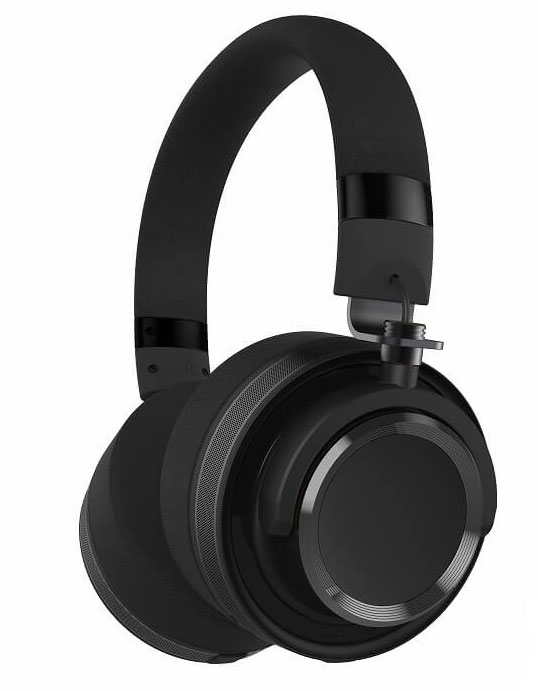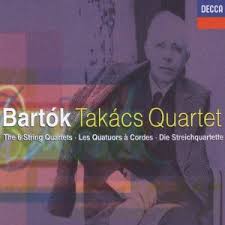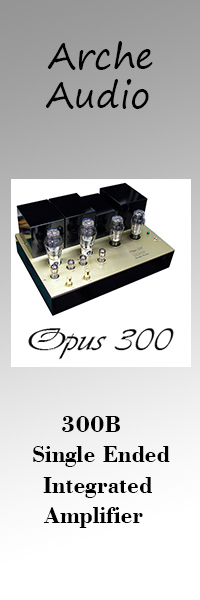LePLus Betelgeuse Headphones

 The LePLus Betelgeuse ($460, Amazon.com) is one of the best over-ear headphones on the market — that nobody has ever heard of — for listening to hi-res files. The comfort, sound, and materials are top-notch. They have the premium feel of the Sennheiser Momentum 2 ($349.95) and the Sony MDR-A ($299), and a look that echoes the B&O Play H4 ($299).
The LePLus Betelgeuse ($460, Amazon.com) is one of the best over-ear headphones on the market — that nobody has ever heard of — for listening to hi-res files. The comfort, sound, and materials are top-notch. They have the premium feel of the Sennheiser Momentum 2 ($349.95) and the Sony MDR-A ($299), and a look that echoes the B&O Play H4 ($299).
The LePlus Betelgeuse headphones arrived in a sturdy box, which slides out from an attractive outer sleeve. The inner box has a clear plastic front, providing both well built packaging and an appealing initial display. Within the box, the headphones are set in a velvety plastic cast, providing further security for transportation. The Betelgeuse model is a very sleek, yet solid take on the classic over-ear headphone design. They feel durable, made of metallic material on the outside of the ear cups and of supple padded foam on the interior. The adjustable arms are made of metal as well, and are also covered in the same comfortable foam. The detachable chord (approximately 1.2 meters in length) that comes with the headphones is both well made and nice to the touch. In fact, the material – seemingly a type of woven nylon – is actually a thoughtful detail; after having used these headphones for several weeks now, I can attest that the chord is totally tangle resistant. With the easily adjustable arms that click to lengthen or shorten, the soft foam, and the pivoting ear-cups, I found these headphones to be extremely comfortable, even with extended use.

Compared to the heavy-duty, noise-isolating seal of LePlus’ Rigel headphones, I would call the Betelgeuse model closed and semi-sealed. This is not necessarily a bad thing for sound quality or listening experience, but simply a difference between models. The semi-seal does not shut out all ambient noise, but it does block a fair amount. The benefit of having a closed headphone that allows some noise exchange between inside and out is that the headphones are less likely to become a boomy resonance chamber. In this way, they allow more detail to be heard, without sacrifices much depth of sound.
 The first thing I listened to with these headphones was one of my all-time favorite classical recordings – the “Takács Quartet” playing Béla Bartók’s six string quartets. There is certainly no shortage at the moment of excellent, concertizing string quartets, yet there is one unusual and outstanding quality about the Takács Quartet that, in my opinion, makes them tower above the rest. As an ensemble, they are both completely cohesive as a single entity, and simultaneously, totally autonomous in their individual musical personalities. This is highly unusual in a quartet, in which either the group is cohesive at the expense of individualism, or individual at the cost of a collective sound. I say all this to point out that when listening to the Takács Quartet, it is not enough to listen with great headphones that only excel with blend and resonance. One needs to hear enough detail to hear the individualism that makes the Takács Quartet so engaging. On the other hand, what makes a string quartet so versatile is the ability of four string instruments to blend into one another. In an ideal setting, a listener would want to hear harmonic blend at certain times, and clarity of individual playing at other times. In others words, to do justice to the Takács Quartet, the headphones need to have it all.
The first thing I listened to with these headphones was one of my all-time favorite classical recordings – the “Takács Quartet” playing Béla Bartók’s six string quartets. There is certainly no shortage at the moment of excellent, concertizing string quartets, yet there is one unusual and outstanding quality about the Takács Quartet that, in my opinion, makes them tower above the rest. As an ensemble, they are both completely cohesive as a single entity, and simultaneously, totally autonomous in their individual musical personalities. This is highly unusual in a quartet, in which either the group is cohesive at the expense of individualism, or individual at the cost of a collective sound. I say all this to point out that when listening to the Takács Quartet, it is not enough to listen with great headphones that only excel with blend and resonance. One needs to hear enough detail to hear the individualism that makes the Takács Quartet so engaging. On the other hand, what makes a string quartet so versatile is the ability of four string instruments to blend into one another. In an ideal setting, a listener would want to hear harmonic blend at certain times, and clarity of individual playing at other times. In others words, to do justice to the Takács Quartet, the headphones need to have it all.
Right from the start, the Betelgeuse headphones did not disappoint. Bartók’s String Quartet No. 1 begins with a series of sighs exchanged back and forth between the two violins, and with these headphones, not only could I hear the two distinctive musical characters, but also I could even hear the grab and texture of the strings as the Takács violinists lamentingly drew their bows. The first movement quickly becomes thick in texture as the viola and cello enter with their own melancholic commentary. So well do the Betelgeuse headphones balance clarity and timbral distinction with richness of sound, that even at the piece’s thickest, I could hear the individual members of the quartet – their unique sounds and vibrato – perfectly balanced within the group mix. I was particularly curious how these headphones would hold up in the last movement, where there is a, more or less, continuously grating open E-string throughout. This is a sound often associated with squawky beginning violinists. Even amongst professionals, the open E-string is usually avoided because of its harsh tendency. Obvious Bartók wanted that sound in his quartet, but how did these headphones deal with such consistent brightness? In my opinion, they were just right. They did not overly subdue or round off the high overtones, but they also didn’t make it sound like the instrument was sawing right under my ear. Specifically in this part, I feel the headphones provided a fairly neutral sound. And more generally overall, I thought that the Betelgeuse headphones performed with very even balance in all registers, providing the sound that one might hear in an intimate chamber music hall.
 I listened next to several songs by the Australian psychedelic pop/rock band, Tame Impala. Let it Happen is an emotionally driven song that juxtaposes anxiety and drive, with relief and resignation. The song opens with electronics, bass guitar, and drums, driving on the front of the beat. Already from the beginning, the group utilizes a full range of registers, which the headphones brought to life in again, a very balanced way. Of particular note, the headphones performed quite well in the lowest register. They brought out the bass guitar with a full-bodied and deep resonance, making it sound and feel like a pumping heartbeat. When the vocals enter with that typical Tame Impala sound – blended and mellow – they are laid over the pulsing heartbeat. LePlus’ Betelgeuse headphones really performed here, being able to bring out the sheen of the higher registers, and still sound a clear and full bass line. ‘Cause I’m a Man was the next Tame Impala song that I listened to. It opens with a slower moving baseline, rich and round in the bass guitar. Like in Let it Happen, the band utilizes a lot of shimmer and sheen in the higher registers, both in the quality of singer’s voice and in the distortion that the electric guitars produce. The headphones are sensitive to this, yet are able to balance brightness with depth of sound. Particularly in the chorus sections of this song, I felt that these headphones were very well balanced, able to give clarity, depth, and naturalness in all registers.
I listened next to several songs by the Australian psychedelic pop/rock band, Tame Impala. Let it Happen is an emotionally driven song that juxtaposes anxiety and drive, with relief and resignation. The song opens with electronics, bass guitar, and drums, driving on the front of the beat. Already from the beginning, the group utilizes a full range of registers, which the headphones brought to life in again, a very balanced way. Of particular note, the headphones performed quite well in the lowest register. They brought out the bass guitar with a full-bodied and deep resonance, making it sound and feel like a pumping heartbeat. When the vocals enter with that typical Tame Impala sound – blended and mellow – they are laid over the pulsing heartbeat. LePlus’ Betelgeuse headphones really performed here, being able to bring out the sheen of the higher registers, and still sound a clear and full bass line. ‘Cause I’m a Man was the next Tame Impala song that I listened to. It opens with a slower moving baseline, rich and round in the bass guitar. Like in Let it Happen, the band utilizes a lot of shimmer and sheen in the higher registers, both in the quality of singer’s voice and in the distortion that the electric guitars produce. The headphones are sensitive to this, yet are able to balance brightness with depth of sound. Particularly in the chorus sections of this song, I felt that these headphones were very well balanced, able to give clarity, depth, and naturalness in all registers.
Overall, I found these headphones to be truly exceptional in sound, comfort, and quality. As an audiophile who enjoys balance and clarity, I am quite impressed by this LePlus model, in particular. The Betelgeuse model delivers detail, wedded with ring and naturalness in sound quality. Listening to a wide array of genres, I always felt with these headphones as if I was experiencing the clarity of live performance in an intimate, yet resonant space. I can say that the Betelgeuse headphones are well worth their price tag, and are truly made for listeners who appreciate detail, but who also know how to just kick back and enjoy a piece of music as a whole. 

mark abell
Specifications:
● Type: overhead / closed type / ● Driver: Φ 40 mm
● Maximum input: 1000 mW / ● Reproduction frequency band: 5 to 40 KHz / ● Output sound pressure level: 98 ± 4 dB / mW ● Impedance: 16 Ω
● Plug: Φ 3.5 mm gold plated stereo mini plug / ● Cord length: about 1.2 m (detachable type)
● Weight: about 235.5 g (excluding cord)
◆ Accessory: ● Japanese instruction manual
Website: www.amazon.com
Stereo Times Masthead
Publisher/Founder
Clement Perry
Editor
Dave Thomas
Senior Editors
Frank Alles, Mike Girardi, John Hoffman, Russell Lichter, Terry London, Moreno Mitchell, Paul Szabady, Bill Wells, Mike Wright, Stephen Yan, and Rob Dockery
Current Contributors
David Abramson, Tim Barrall, Dave Allison, Ron Cook, Lewis Dardick, Dan Secula, Don Shaulis, Greg Simmons, Eric Teh, Greg Voth, Richard Willie, Ed Van Winkle, and Rob Dockery
Music Reviewers:
Carlos Sanchez, John Jonczyk, John Sprung and Russell Lichter
Site Management Clement Perry
Ad Designer: Martin Perry





Be the first to comment on: LePLus Betelgeuse Headphones